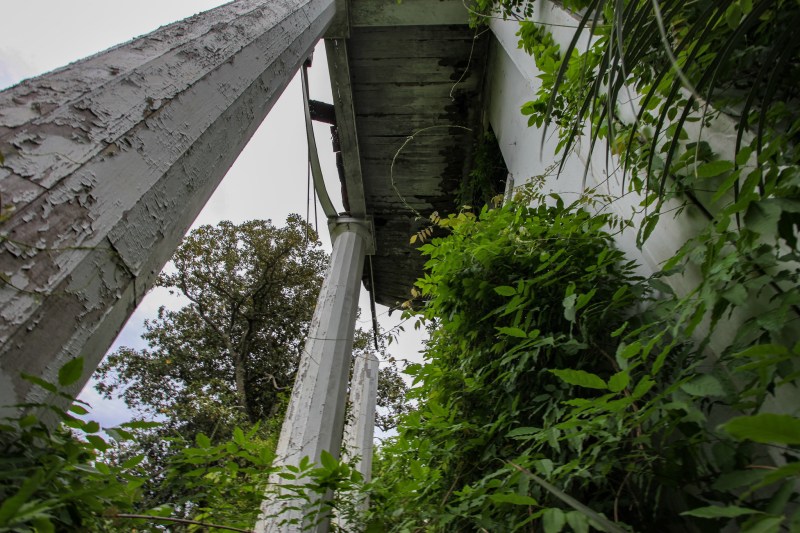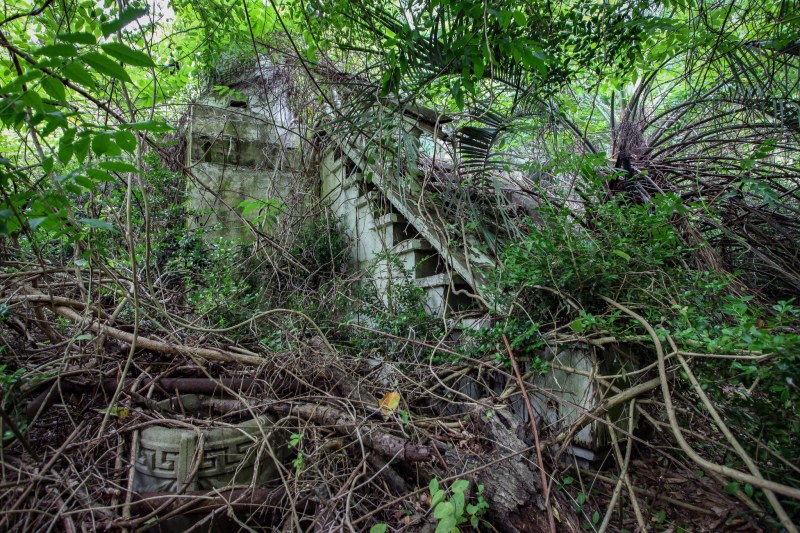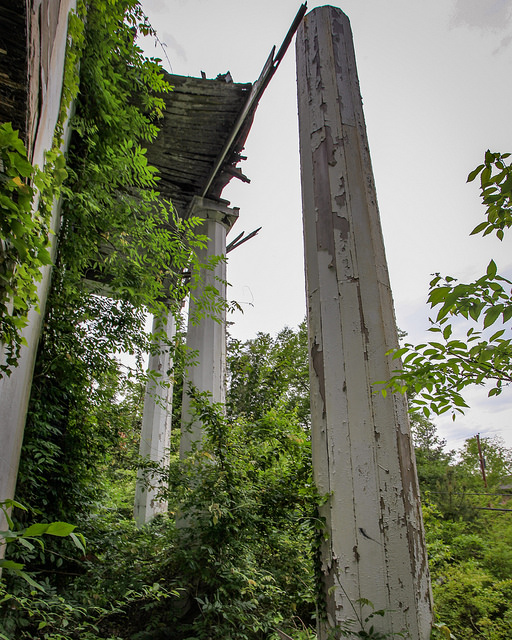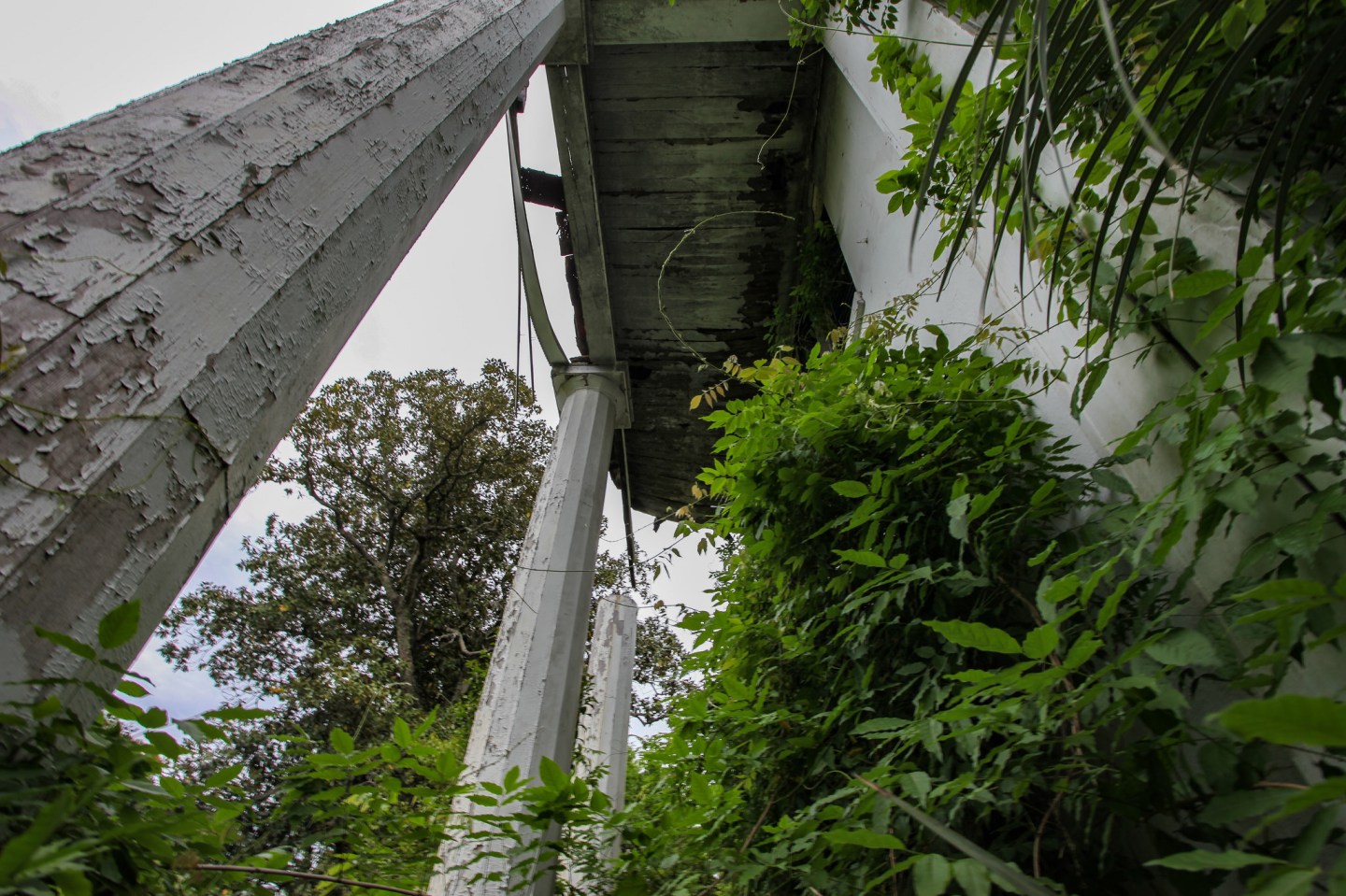Pomegranate Hall was built in 1830 for Judge Nathan Sayre, a lawyer and intelligent real estate investor. Sayre, a New Jersey transplant, became a Georgia state attorney, member of the Georgia legislature, and a superior court judge. Though never marrying, Sayre had three children with Susan Hunt, a freed slave. Hunt was a mix of Cherokee, Caucasian, and African. For many years, they lived together at Pomegranate Hall.

Originally, Pomegranate Hall was situated on several acres, where Sayre had vineyards and pomegranate trees planted for making wine. The home itself built of granite and brick with walls two feet thick. It is believed the house was partially constructed in New Jersey and brought to Georgia in sections. The house was known to have false walls and a very unusual layout that included a kitchen on the bottom floor. The main floor consisted of an elaborate entrance hall, two reception rooms, and a library. Judge Sayre was one of few people of his time who challenged racial boundaries.
Among the volumes in Sayre’s library was a book by Alexander Walker titled Intermarriage; or, The Mode in Which and the Causes Why, Beauty, Health, and Intellect Result from Certain Unions, and Deformity, Disease, and Insanity, from Others. It was a rare book for this era that argued against the common belief that racial “amalgamation” would produce degenerate and physically inferior offspring. The children of Nathan Sayre and Susan Hunt proved to be anything but inferior. The couple’s children and many grandchildren would become prominent figures in the Southern education and reform movements.


The front porch has a stairway on each side, and a balustrade runs along the front of the porch and down each set of stairs. Four massive Doric columns with fourteen sides on square pedestals support the front porch. Marble mantles and silver knobs gave the home a sophisticated feel. The multi-level house had several entrances, stairs, and cul-de-sacs. From the back of the house, all three stories are visible, but from the front, you only see two. Some believe this is where the name “Half House” came from. Under the porch, there is another entrance leading to the kitchen, but it is barely visible today due to the dense vegetation around the house. Some believe the complex layout of Pomegranate Hall was to support the equally complicated family dynamics. After the Judge’s death in 1853, the house was purchased by the Simpson family. They owned it when diarist Frances Andrews visited, shortly after Sherman and his soldiers burned everything just a short distance away.


In 1963, the widow of Oliver Macy (of the Macy’s Department Store family) purchased Pomegranate Hall. She was known to always wear all black and often walked into downtown Sparta from her stately residence. Ms. Macy lived in Pomegranate Hall until her death in 1992. The house was later sold to Emily K. Hair, widow of the late historian Dr. William Ivy Hair. In July 2001, during an argument with her son, Ms. Hair set fire to clothes in an upstairs bedroom. The fire spread quickly from the bedroom, down the stairwell and into the furnace, engulfing the entire upper floor. The fire left the house severly damaged.
In 2003, the current owner purchased the house from Steve Hair, who inherited it from his late mother. The renovation proved to be too costly for the new owner. Today, the floors have collapsed, and the house is covered in massive overgrowth. There appears to be no saving the once grand mansion.


Where in Georgia is Pomegranate Hall ? Is it for sale now? Thanks for any information. Beth Labasky
LikeLiked by 1 person
The house is in Sparta. I don’t think it is for sale.
LikeLike
Who is the current owner or is it in receivership? Can one go on the property to get a closer look?
LikeLike
Great photos. The information about the house being constructed partially in NJ is an inaccurate much repeated fallacy. I’m connected to the house through the second owner, William Wingfield Simpson, who purchased the house after Judge Sayre’s death. He also owned ROCK MILL on the Ogeechee River. The summer air arising on the river was thought to have contained ‘miasma’ ,detrimental to one’s health, therefore, he bought The Half House in town. It went by that name for most of the nineteenth century, owing to its side hall plan with door to left of center , a plan not as familiar in Middle Georgia ,most Greek Revival houses having center halls. W.W. Simpson sold and moved to Washington/Wilkes Co. Georgia in 1870’s.
LikeLiked by 2 people
Thank you for the information and correction.
LikeLiked by 1 person
Many abodes were immediately abandoned with nothing taken in fear of contacting ‘Bad Air’, Fear of contacting the diseases of those living within, who are infected with diseases such as cholera, black death, bronchitis.. There are also the risks for the explorer of being bitten my recluses, and even Cottonmouths. And according to Vic Cundiff’s’ Dogman Encounters 204, it was Abandon home explorer Jon Barret and his girlfriend who had an encounter with the unknown. This is believed why the Abandoned home was so clean, as in free from vandalism and painted graffiti.
Thanks for posting as I always enjoy your blog as do other fans.
LikeLiked by 1 person
Went to see Pomegranate Hall yesterday (5-5-19). It’s so overgrown that even using GPS we drove by it three times before actually spotting it. The structure is so collapsed at this point it seems very dangerous to do anything but walk around the outside edges.
LikeLiked by 1 person
I know that several years ago the house was owned by someone who, I believe lived in Marietta, had plans to turn it into a B&B and set up a nonpy that stated that intent. Can anyone fill in any other details? Who owns it and possible future plans?.
LikeLike
Sherman’s army never came through Sparta.
LikeLike